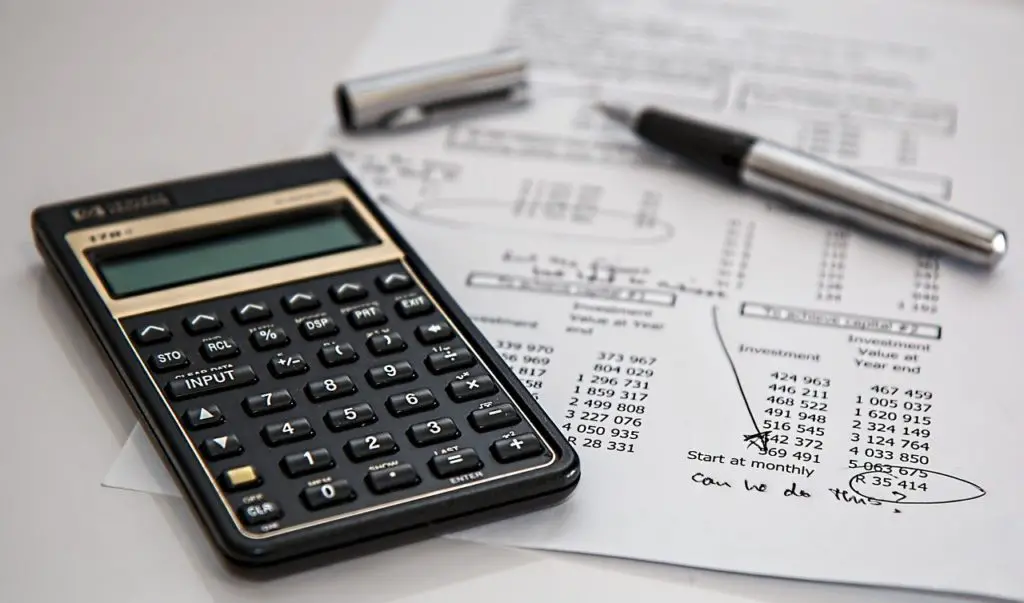How To Take Steps Toward Financial Freedom Without Being Rich

Despite what you may believe about your finances, financial freedom is likely within your reach. This is regardless of your income and your circumstances (having children/not, single/dual-income family). To be clear, I am not saying that your income and circumstance don’t matter. However, more often than not, these are used as excuses not to pursue financial freedom. Everyone can take steps toward financial freedom and you don’t have to be rich to do it.
What is financial freedom?
To me, financial freedom is the flexibility of choice as it relates to your money. It can start small, not having to live paycheck to paycheck. This doesn’t mean you don’t need a paycheck. It just means that one paycheck will not make or break you, your budget, and your lifestyle.
Financial freedom can go as far as getting to the point of never needing another paycheck again. Most people, with some planning, will land somewhere in the middle. So how does one accomplish financial freedom without being rich?
READ MORE: How to recession-proof your life in 6 steps
#1 Decrease your expenses
This is a great first step because you can start instantly. First, you have to determine how much you’re spending currently. And don’t guess. You will almost always assume you’re spending less than you actually are.
#1a What are your expenses?
How do you concretely determine how much you’re spending? By tracking your spending. This can be done retroactively (looking to your past) by using last month’s credit card or bank statements. Wherever, you spend money, have those statements in front of you. Mark each transaction with a W or an N for want or need. To be clear, needs are things such as food, housing, transportation, and insurance.
You can also track your spending in real-time. You can use a budget template from Microsoft Excel, Google Sheets, or Apple Numbers. As you spend money, you can enter the money spent and categorize them. The spreadsheet can then tell you how much you’re spending in each category.
The easiest way to track your spending is by using an app, like Mint or Personal Capital. I have used Mint for years. It automatically categorizes each transaction mostly accurately. You can always fix what’s categorized wrong and make it right. You can quite easily tell how much you spend in each category.

#1b Decrease your expenses
Finding ways to decrease your expenses helps you to have more wiggle room with each paycheck. Wants are easier to decrease than needs but you can make adjustments on both sides. When it comes to your wants, determine how much you spend on any one category, and see if you can adjust it a little. For example, if you spend $50/month on a gym membership, could you find a cheaper gym with similar services? That change alone can potentially save you $480 a year. You could do the same with how much you spend on clothing, entertainment, etc.
Your needs can also be adjusted. How much do you spend on groceries? While food is a necessity, do you find that sometimes the food you buy goes bad and you have to throw it out? A lack of planning can have you shelling out tons of cash at the grocery store that you wind up essentially throwing in the garbage. You can look for ways to save money at the grocery store. Meal planning can help you to save a lot of money and decrease waste.
Managing the use of your utilities, such as your electricity bill, can provide savings month after month. Avoid bank and ATM fees for more savings. Additionally, give thought to whether or not you can downgrade your home or move to a lower cost of living area. I live 10 minutes away from the city in New Jersey as it is much more affordable. And I love living here!
#1c Paydown debt
Getting rid of debt is the most satisfying of expenses to get rid of. The reason being is that, technically, whatever debt you pay off, you’ll never have to see it again. Credit card debt, school loans, car notes, and the like are all monthly expenses that can go away. I shared the steps I took in the post about my financial mistakes. There are many ways to consolidate or pay off debt so you have to take a look at your entire financial picture in order to determine what will work best for you. A financial advisor can be helpful here, preferably one who will not benefit financially from your taking his advice.
#2 Save and Invest the Difference
As you start to widen the gap between your income and your expenses, you’ll find that you have more cash available to you than you thought possible. This is money you can now use to start building your cushion or wiggle room. Call it whatever you like but this is where the feeling of freedom begins. The greater you grow your savings, the less dependent you become on your paycheck, and the easier you can breathe. This means that you can cover unexpected expenses without having to add more debt.
Your first savings goal, in my opinion, is to save $1000 in an emergency fund. While $1000 for most is not earth-shattering money, it can be a start to the buffer needed so that something like a flat tire doesn’t make you tack on to your credit card debt. Where will you find the money to create this buffer? You did it by decreasing your expenses.
Once you’ve established and started to build your emergency fund, then you can work towards your other financial goals, such as increasing your savings, paying off debt, and investing. Consider having different bank accounts for your different needs and wants. I have a bank account to pay house bills, one for vacation, another for personal spending, etc. You can see my bank account breakdown here.
Even if you’re still paying off debt, start investing. You can start for as little as $5 a month, just start. Just remember that investing, for most, is a long-term plan. So I would discourage you from investing money you expect to need in five years.
#3 Increase your income
This requires work and planning. The easiest way to make more money is by getting a raise at work or getting a job that pays more. This shouldn’t require you much additional time even if you’re applying and interviewing for new jobs.
You can do small things, like mystery shopping. Before COVID-19 shut everything down, I loved getting paid to eat food I loved or buy things I could use. While the pay isn’t always amazing (it depends on the companies you sign up with), what you spend is always reimbursed so your fee is still “extra” money. Once I got intentional with my goals of financial freedom, I would take how much they paid me (the fee) and save it. Some people make a lot of money doing this. If you are familiar with those companies that pay higher fees, share in the comments below. Inquiring minds want to know.
You can also do gig work/freelance, like Uber and Fiverr. The hours are flexible so you have a lot of power over how much you make.
READ MORE: I Did Uber Eats for a Week – Learn How to Best Use It to Actually Make Money
Acquire new skills. You can watch YouTube videos or sign up for classes through online education portals, like Udemy. These new skills can help you to get a raise at work, change positions at your company, find a new job, or do gig work/freelance. No matter how you use those new skills, you have now increased your income by applying them.
What do you do with this extra money? See #2. Save and invest the difference. You keep doing this focusing on the financial goals you seek to accomplish and you will feel the anxiety you feel about money slowly start to melt off.

Financial freedom is not only for the rich. It’s meaning for you will differ from mine and other people you interact with. However, in order to be successful, you have to adjust your mindset and be intentional in your day to day activities. You don’t have to obsess over every penny or deny yourself every pleasure to get there. Instead, create a plan that works for you and stick to it. Be ok with adjusting the plan if your circumstances change. Re-commit to your plan once you’ve ironed out the details.
Your turn. What does financial freedom mean to you? What steps have you taken or are going to take to achieve your goals? Share in the comments below.

Kirsten Rosetti
I never used to track my spending, but once I started I realized how much I could be saving but wasn’t and that made all the difference for me. It also helped me create a sustainable budget and monthly savings goal because I had a clear idea of how much I really needed. I haven’t really got into investing yet, but that’s next on the list.
Thanks for the great tips. 🙂
How to get rid of PMI without refinancing —
[…] RED MORE: How To Take Steps Toward Financial Freedom […]
Is Financial Literacy Important? Be Confident With Your Money —
[…] MORE: How To Take Steps Toward Financial Freedom Without Being Rich Numbers You Need to Know to Control Your […]